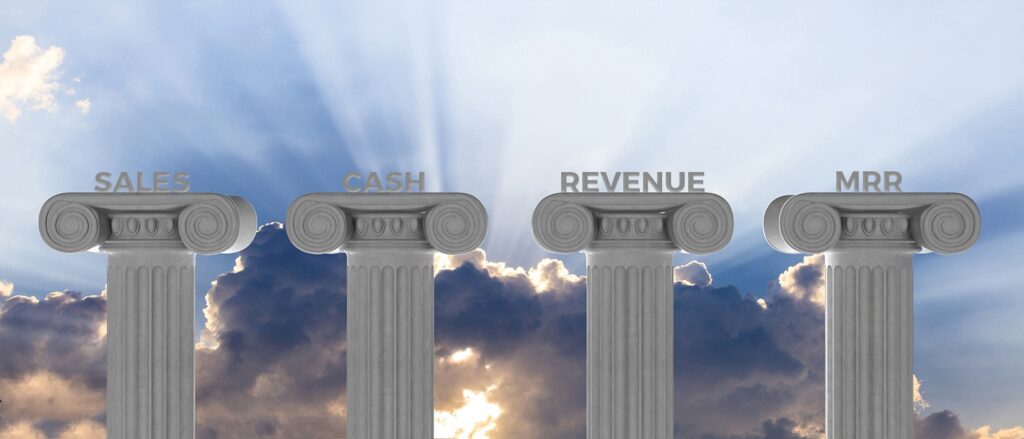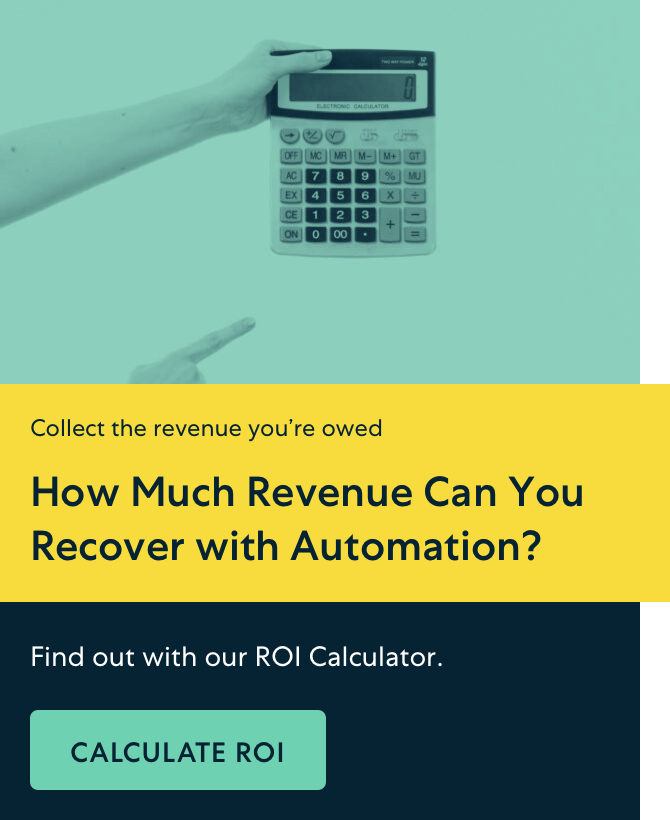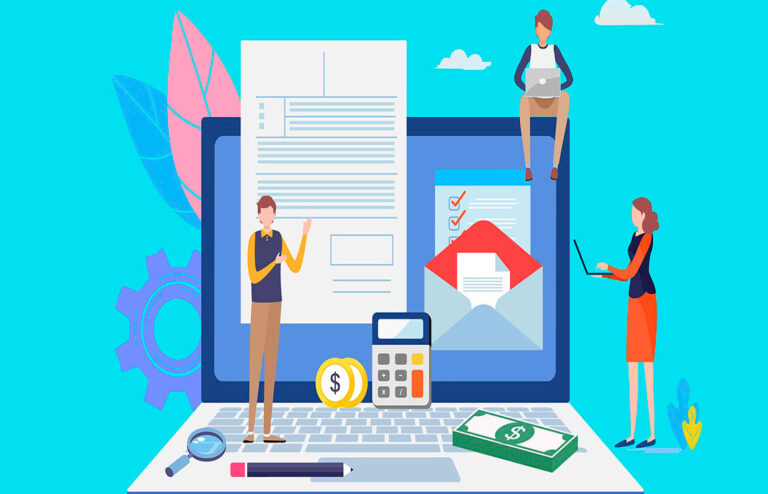Myth: Subscription management is all about billing.
Fact: SaaS companies live and breathe off of their customers. Subscriptions are at the heart of what they do, and billing is only one part of that. Good subscription management software recognizes this and acknowledges it in a way that allows businesses to integrate their tech stack, improve their collections process, and maximize efficiency. It goes beyond just automated billing, and includes data-driven insights to reduce cancellations and maximize retention, offer monetization opportunities, and even provide revenue forecasting. Sounds like a pipe dream? It doesn’t have to be. With the right all-in-one subscription management software, SaaS businesses and startups not only change the way they handle their billing but also can enjoy benefits felt company-wide. If you’re not sure where to start with finding a subscription management solution that offers automated recurring billing, revenue recognition, and more, we’ve got your back. This is the comprehensive guide on all-in-one subscription management solutions: what they are, their benefits, and how to choose the best one to help streamline your workflow. Let’s get started.
TL;DR
- Subscription management software (also called recurring billing software) helps SaaS businesses automate the repetitive and manage the subscription plans that they offer to their customers. They include benefits like automated billing and invoicing, recurring payments management, analytics and reporting, and dunning management.
- Some of the ways the subscription management solutions can support your business includes streamlining billing management, strengthening collections assurance, and empowering customers to do more themselves.
- To choose the right provider, ensure they offer transparent pricing, PCI compliance, and can scale alongside you.
What’s an All-in-One Subscription Management Platform?
In a nutshell, subscription management software (also called recurring billing software) helps SaaS businesses automate the repetitive and manage the subscription plans that they offer to their customers: that includes sign-ups, upgrades, downgrades, renewals,and cancellations, but also all customer data and recurring revenue. It should cover all things on subscription billing—including revenue recognition, which is a key accounting principle dictating when revenue recording is appropriate. However, an all-in-one platform goes beyond that to ensure strong financial health and a customer-centric approach. Here are the main benefits it should bring:
- Automated billing and invoicing: Yes, this should go without saying, but it’s worth repeating. At the very least, your billing solution provider should automatically generate and send invoices to customers, and support flexible billing cycles (like weekly, monthly, and annually). Its management features should include prorated billing, which allows you to fairly charge customers if they start using your platform in the middle of the billing cycle.
- Recurring payments and management: With recurring billing, companies can more accurately forecast revenue and improve cash flow. On the customer side, it can help improve retention by providing a frictionless billing experience. A great recurring billing platform is scalable, meaning as your business grows, the platform can grow right along with you. (More on the benefits of payments management later!)
- Analytics and reporting: To maximize sustainable growth, you need to know that what you’re doing works, not just hope for the best. That’s why a great all-in-one subscription management platform provides robust, real-time analytics that do a deep analysis into your SaaS metrics and provides actionable insights to improve your performance, help increase your customer lifecycle, and drive conversions.
- Dunning management: It’s important that you’re able to recover lost revenue from failed payments, which is where dunning management comes in. On top of that, it’s useful for reducing churn. By retrying failed payments, communicating with customers, and empowering them to make payment updates themselves, an all-in-one subscription billing platform can significantly improve your bottom line through dunning management.
By the way: this isn’t an exhaustive list. There are other features you should keep in mind, like CRM integrations to enhance customer management and customizable APIs so you can easily integrate your billing platform into other systems you use. But with these key features in mind, you should now have a sense of what to look for when selecting your potential subscription billing management providers!
5 Ways All-in-One Subscriptions Management Software Supports Your Business
Now that we’ve explained what exactly a fully-integrated subscriptions management solution is, let’s take a closer look at how it can help you meet your goals.
1. Billing management gets done in a fraction of the time
Yes, we’ve mentioned it before, but this point can’t be stressed enough: subscription management software makes billing better for the business and the customer.
On the customer-facing end of the equation, the benefit is consistency. Invoices are on time and accurate. Gone are the rough tickmarks of human error. Never again will Jane Smith get an invoice addressed to Jan Smit.
According to Salesforce, 75% of customers view consistency as one of the most important elements of their overall experience with a business—to the point that they will seek new providers if it isn’t there. For the business that values a low churn rate, this obviously isn’t ideal.
Subscription management software also frees a significant amount of time up for your billing department. The more customers a subscription business has, the more impractical it becomes to handle invoices manually.
Billing is a job that can take weeks to do by hand, but the best subscription management software distills the work down to an afternoon—or even less. Not only is this vital for a recurring billing business’s scalability, but it also allows team members to focus on tasks that will have a higher impact for the business.
Automating manual processes has been shown to result in savings of up to nearly 50% per department that’s impacted. By handling customer subscriptions and payment processing with recurring billing software, you make one change with many benefits for customers and the business alike.
2. Collections assurance is strengthened
A subscription management platform can also make it easier to collect late or outstanding invoices. Manual dunning can be a challenge, particularly when your billing department is already bogged down trying to get dozens of invoices out by hand.
Subscription management tools can enable:
- Automated credit card retries. Often, delinquent payments can be chalked up to a credit card issue—approximately 20% of Americans experience credit card overdrafting. For example, a customer may be overdrawn at the point that their card is billed. Even though they intended to maintain their subscription, they’re booted because the payment registers as “missed.” Automated credit card retries address this issue—often without the customer ever needing to know there was a problem. This strategy has been shown to save up to 75% of revenue that would have otherwise been lost to churn.
- Credit card auto-updates. Credit cards expire every three to four years. When this happens, customers may not think or want to manually update their card with every vendor that has it on file. Many subscription management tools work with card providers to automatically update this information.
- Automated customer communications. Subscription management software also automates dunning communications. Email and even text notifications are sent directly to customers with outstanding invoices, providing them with clear instructions on how to put their accounts back in good standing. The dunning management module can even enable you to adjust your messaging in each round of reminders to convey the growing urgency.
- Improved reporting capabilities. A good subscription management system will also provide you with clear reporting on who owes what and for how long. These reports make it easier for your business to identify issues and craft a dunning management strategy that caters directly to its needs.
It’s easy for outstanding payments to result in involuntary churn—a phenomenon where customers who wish to maintain their subscription are kicked off. Up to 40% of churn is involuntary, leading to extensive revenue leakage.
Not only is this expensive—costing businesses up to 5% of their annual revenue—it’s also avoidable. A reliable subscription lifecycle management software addresses all of these concerns, retrieving revenue and maintaining customer subscriptions simultaneously.
3. Customers become empowered to take care of themselves
Subscription management software puts more power in the hands of your customers by providing them with a host of self-service options that make it easier to adjust and manage their subscriptions. Around 80% of customers attempt to handle any product issues or adjustments on their own before reaching out to the company, while roughly 70% of them prefer this to interacting with customer service.
Many subscription management services provide hosted pages that allow your business to effortlessly implement these portals. Not only does this benefit a significant portion of customers, but it also improves your overall customer experience framework.
When customers can handle simple problems themselves, it makes it easier for your business to handle the complicated ones. And, because your resources are being better used, you can provide a higher level of care to customers. Lower wait times and more personalized responses prompt results your customers will remember the next time they are asked to renew their contract.
4. Data management becomes simple and clean
Subscription management software improves data management by eliminating the need for manual re-entry. The manual data entry error rate is around 1% — a seemingly insignificant number with the potential to produce significant consequences.
Subscription management technology can eliminate it entirely by integrating with the rest of your tech stack. Without integrations data is shared manually—sometimes verbally—between departments, creating an opportunity for mistakes to be made anytime someone needs information.
Through integration, data is accessible between departments. Integrations can be incorporated into everything from your CRM and ERP to your payment gateways. The subscription management software serves as a bridge, passing data seamlessly where it needs to go.
5. Reporting capabilities can go more in-depth
Aside from simply housing data, subscription management platforms also produce it in large, well-organized quantities. This information can be channeled into productive means through automatically generated dashboards that are easily accessed by the departments that need them.
Billing-generated data can help you better understand your customers for marketing purposes. It can facilitate usage-based information that is vital for product development, and provide calendar-based reports that indicate how much revenue will be coming in on a given day.
Through accessible reporting, each of your departments can access and implement the information they need in a way that’s easy to understand and use.

How Do You Choose the Right Subscriptions Management Software for Your Business?
With seemingly endless providers all promising stellar revenue management solutions and predictable cash flow, it can be challenging knowing where to start and which companies should be on your shortlist. In addition to all the features we mentioned at the start of this guide, here are a few factors you should keep in mind:
- Transparent pricing: It’s not uncommon for companies to obfuscate the terms and conditions behind their subscription model, surprising you with hidden charges like cancellation or minimum usage fees. If you can’t easily find how much they’ll charge you from their website or a quick phone call, that might be a red flag. The best option is a provider that clearly states their pricing model up front, and ideally charges a flat rate, like we do at Stax Bill. All our pricing plans are easy-to-understand, and we don’t charge overage fees for businesses experiencing faster-than-expected growth.
- Security: It’s of the utmost importance that you utilize industry-leading security to protect your SaaS data and customer payment information. To that end, make sure your subscriptions management provider is PCI compliant. The PCI DSS (Payment Card Index Data Security Standard) is a set of standards that vendors accepting credit cards must comply with. Non-compliance can lead to fines as high as $100,000 per month and legal action, meaning it’s important to ensure compliance, and preferably Level 1 certified, the highest possible level.
- User-friendly interface: Managing subscription billing shouldn’t feel like pulling teeth! Find a provider that offers a demo or trial, and make sure the interface is easy-to-use and navigate, and that they offer an onboarding program and regular support throughout the customer lifecycle.
- Customer support: On that note, don’t forget to find out what kind of customer service they provide: is it easy to contact a real person, or do you only speak with bots? Do you have a dedicated account manager? If something goes wrong, how easily can it be solved?
- Scalability: Find out if your future provider can grow along with you, for example by accepting a range of payment methods, or including an integrated payment gateway. If you plan to expand to international markets, what does their localization strategy look like? Can their billing system bill in currencies other than the US dollar, or automatically create invoices in multiple languages?
Finally, it’s important to see what real customers have to say about the options you’ve shortlisted. To do that, look at independent/third-party sites, like G2 or Capterra. That way, you’ll get the real scoop and have a better idea of what to expect when you sign up with your new subscription management system. If the reviewers are happy, then that’s a good sign—and we’re proud that the overwhelming majority of our reviews are positive about Stax Bill!
After selecting a platform, your new provider should help you with the transition, providing support for processes like data migration, trainings, and testing. Done properly, you can have a stress-free transition and set yourself up for subscription management success.
Beyond billing
Automated billing and invoicing processes are good to have in place. What full-scale subscription management systems provide is better: Collections assurance. Integrated data and reporting. Customer empowerment.
Subscriptions are about so much more than just invoices. They are the beating heart of any SaaS business.
A good subscription management platform is like a vascular system, funneling information everywhere it is needed in formats that are easy to access and understand.
For businesses that value efficiency, it’s vital.
Increase your subscription business’s efficiency. Schedule a demo with Stax Bill.
Quick FAQs about All-in-one Subscription Management Software
Q: What is an all-in-one subscription management software?
An all-in-one subscription management software is a comprehensive tool that allows SaaS businesses and other subscription-based models to automate billing, manage customer subscriptions, and gain insights into their revenue streams. Unlike basic billing systems, these platforms integrate various operations such as recurring payments, analytics, and customer communications, transforming how companies manage their subscriptions and customer data.
Q: Why is subscription management not just about billing?
Subscription management goes beyond billing because it involves managing the entire customer lifecycle, from sign-ups and renewals to data management and revenue forecasting. A robust system provides data-driven insights to minimize cancellations and maximize retention, thus supporting the overall financial health and customer satisfaction.
Q: What are the key benefits of using subscription management software for SaaS businesses?
Key benefits include automated billing and invoicing, recurring payments management, improved analytics and reporting, and dunning management to recover lost revenue. These features help businesses streamline operations, enhance customer experience, and provide actionable insights for growth and retention.
Q: How does subscription management software improve customer retention?
Subscription management software improves retention by offering a seamless billing experience, automated communications for outstanding payments, and self-service options for customers to manage their subscriptions. This reduces churn by ensuring payments are timely and customer interactions are consistent and error-free.
Q: What features should you look for in subscription management software?
Essential features include flexible billing options, real-time analytics, dunning management, PCI compliance, scalability, and integration capabilities with CRM and other tech stacks. These features ensure the software can grow with your business and provide a secure, user-friendly experience.
Q: How does subscription management software assist in revenue forecasting?
By automating billing cycles and offering real-time analytics, subscription management software provides accurate revenue forecasts. This allows businesses to plan better and make informed decisions based on projected cash flows and customer behavior patterns.
Q: What role does dunning management play in subscription management?
Dunning management is crucial for recovering revenue from failed payments. It automates retries, updates customer payment information, and sends notifications to customers about outstanding payments, thus reducing involuntary churn and revenue loss.
Q: How can subscription management software enhance customer empowerment?
Subscription management software enhances customer empowerment by providing self-service portals for managing their subscriptions. This includes updating payment methods, changing subscription tiers, and accessing support, freeing up your team to focus on more complex customer inquiries.
Q: What are the security considerations when choosing a subscription management software?
Security is paramount, so ensure that the software provider is PCI compliant and uses industry-leading security measures. This protects both your company’s and your customers’ sensitive data against potential breaches.
Q: How does integration with other systems benefit subscription management?
Integration with systems like CRM and ERP ensures seamless data flow across your business, reducing manual data entry errors and increasing operational efficiency. This connectivity allows for better data insights and a cohesive customer management strategy.







